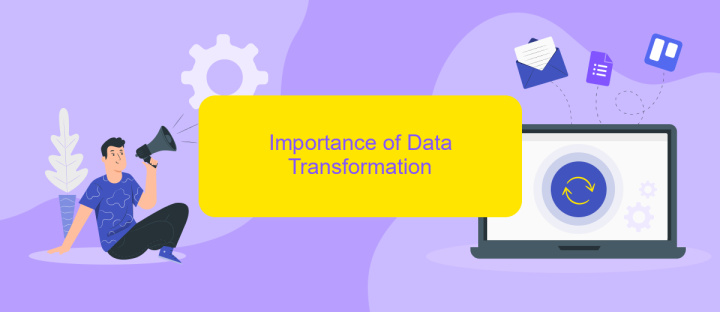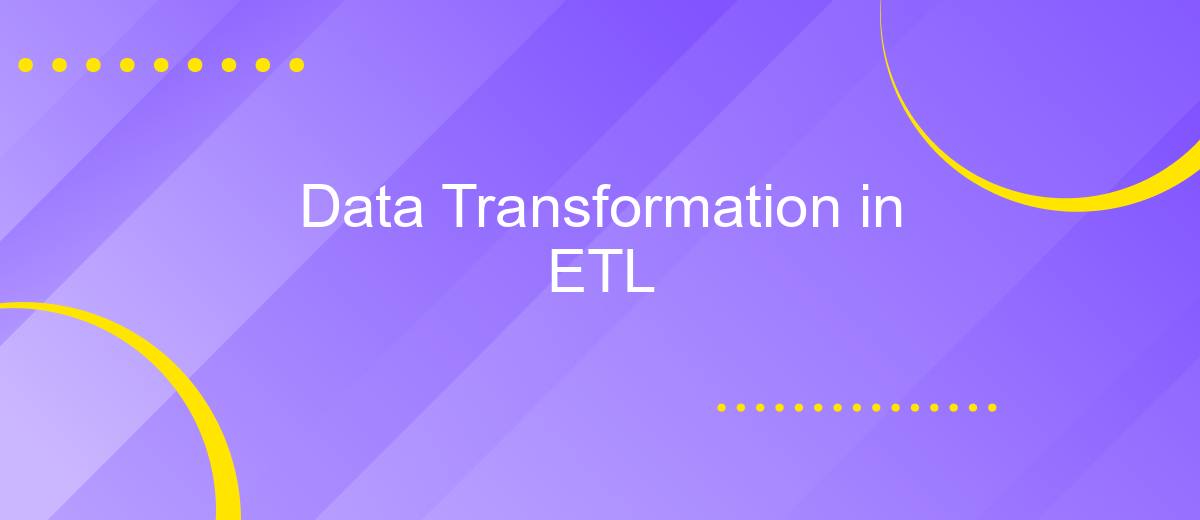Data Transformation in ETL
Data transformation is a crucial step in the ETL (Extract, Transform, Load) process, enabling organizations to convert raw data into a meaningful and usable format. By applying various techniques, data transformation ensures that information is accurate, consistent, and ready for analysis. This article explores the essential aspects of data transformation in ETL, highlighting its importance and common methods used in the industry.
Introduction
Data transformation is a crucial phase in the ETL (Extract, Transform, Load) process, ensuring that raw data is converted into a usable format for analysis and reporting. This step involves cleaning, structuring, and enriching data to meet specific business requirements.
- Cleaning: Removing inconsistencies and correcting errors in the data.
- Structuring: Organizing data into a predefined format or schema.
- Enriching: Adding valuable information to the data to enhance its quality.
Effective data transformation can streamline business processes, improve decision-making, and enhance data quality. Tools like ApiX-Drive facilitate seamless data integration and transformation by automating workflows and connecting various data sources. By leveraging such services, organizations can ensure that their data is accurate, consistent, and ready for analysis.
What is Data Transformation?

Data transformation is a crucial step in the ETL (Extract, Transform, Load) process, where raw data is converted into a format that can be easily analyzed and utilized. This transformation can involve various operations such as filtering, aggregating, sorting, and enriching the data. The goal is to ensure that the data is consistent, accurate, and ready for further processing or analysis. By transforming data, organizations can gain valuable insights and make more informed decisions.
There are numerous tools and services available to facilitate data transformation. For instance, ApiX-Drive offers a seamless way to set up integrations and automate data transformation tasks. With its user-friendly interface and powerful features, ApiX-Drive enables businesses to connect various data sources and transform data without extensive coding or technical expertise. This not only saves time and resources but also ensures that the data is always up-to-date and reliable.
Importance of Data Transformation

Data transformation is a crucial step in the ETL (Extract, Transform, Load) process, playing a vital role in converting raw data into a usable format. This step ensures that data from various sources is consistent, accurate, and ready for analysis, which is essential for making informed business decisions.
- Data Consistency: Transformation ensures that data from different sources is standardized, making it easier to integrate and analyze.
- Data Quality: It helps in cleaning the data by removing duplicates, correcting errors, and filling in missing values.
- Data Enrichment: Transformation can add value to the data by merging it with additional information, making it more insightful.
For seamless integration and transformation of data from various sources, services like ApiX-Drive can be extremely useful. ApiX-Drive allows for easy setup of data pipelines, automating the extraction, transformation, and loading processes. This not only saves time but also ensures that the data is always up-to-date and accurate, thereby enhancing the overall efficiency of the ETL process.
Tools and Techniques for Data Transformation

Data transformation is a crucial step in the ETL (Extract, Transform, Load) process, involving the conversion of raw data into a format suitable for analysis. This phase ensures that data is clean, consistent, and usable for business intelligence and reporting.
Various tools and techniques are available to facilitate effective data transformation. These tools help automate and streamline the process, reducing manual effort and minimizing errors. Selecting the right tool depends on the specific requirements and complexity of the data transformation tasks.
- Data Integration Platforms: Tools like ApiX-Drive help integrate data from multiple sources, automating data flows and ensuring seamless connectivity.
- ETL Tools: Popular ETL tools such as Apache NiFi, Talend, and Informatica provide robust capabilities for data extraction, transformation, and loading.
- Data Wrangling Tools: Tools like Trifacta and Alteryx enable users to clean and prepare data through an intuitive interface.
- Scripting Languages: Python and SQL are commonly used for custom data transformation scripts due to their flexibility and power.
Choosing the appropriate tools and techniques for data transformation is essential for efficient data processing. By leveraging the right solutions, organizations can ensure high-quality data that drives accurate insights and informed decision-making.


Best Practices for Data Transformation
Effective data transformation practices are essential for ensuring the accuracy and efficiency of ETL processes. One crucial practice is to maintain data consistency by establishing clear data transformation rules and standards. This includes defining data types, formats, and validation rules to ensure uniformity across different data sources. Regularly updating and documenting these rules helps in maintaining data integrity and simplifies troubleshooting when issues arise.
Another best practice is to leverage automated tools and services for data transformation. Utilizing platforms like ApiX-Drive can significantly streamline the integration and transformation processes. ApiX-Drive allows for seamless connection of various data sources and automates data mapping, reducing the risk of human error. Additionally, it's important to perform thorough testing and validation of transformed data to ensure it meets the desired quality standards before loading it into the target system. Regular monitoring and auditing of the ETL process can further enhance data reliability and performance.
FAQ
What is data transformation in ETL?
Why is data transformation important in ETL?
What are common data transformation techniques?
Can data transformation be automated?
How does data transformation impact data analysis?
Time is the most valuable resource for business today. Almost half of it is wasted on routine tasks. Your employees are constantly forced to perform monotonous tasks that are difficult to classify as important and specialized. You can leave everything as it is by hiring additional employees, or you can automate most of the business processes using the ApiX-Drive online connector to get rid of unnecessary time and money expenses once and for all. The choice is yours!

